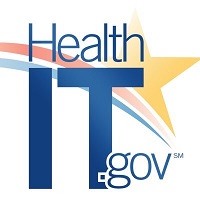 By Steven Posnack, MS, MHS, Deputy National Coordinator for Health Information Technology and Brett Andriesen
By Steven Posnack, MS, MHS, Deputy National Coordinator for Health Information Technology and Brett Andriesen
Twitter: @ONC_HealthIT
Steven’s Twitter: @HealthIT_Policy
Can you believe it’s already 2020? We may still be a few years away from flying cars, but we’ve made a lot of progress since 2010. The Interoperability Standards Advisory (ISA), too, has changed a lot since the first publication in 2015 – from a static, 13 page document, to an interactive website covering close to 200 “interoperability needs” spanning clinical care, public health, administrative transactions, research, consumer access, and more.
After receiving public comments during this year’s review and comment period, staff from the Office of the National Coordinator for Health Information Technology (ONC) analyzed comments and made updates all across the ISA. To commemorate the sixth annual ISA publication, here are six of the biggest changes you’ll see in ISA this year. You can also see more high-level updates or follow the ISA RSS Feed to track any changes made throughout the year.
- A Redesigned ISA Homepage
If you’ve been following the ISA for some time, you likely remember the home page had tons of informative text. We’ve redesigned the ISA homepage to make things easier to find when you arrive – while moving the informative text onto other pages that are broken down by topics. We’ll be making more improvements to the site’s navigation and adding more informational resources over the next few months as well. - Additional Social, Behavioral, and Psychological Interoperability Needs
As ONC continues work to support interoperability for Social Determinants of Health, the ISA has added four new interoperability needs in this area, including Representing Drug Use, Representing Food Insecurity, Representing Housing Insecurity, and Representing Transportation Insecurity. As factors like these can greatly impact one’s overall health, ensuring this information is known, and captured in clinical systems and available to providers is important. - Care Coordination for Referrals
Referrals represent an important aspect of one’s care, but often information is not available to providers about the patient’s medical needs or follow-up care. This new sub-section, Care Coordination for Referrals includes information about a number of initiatives that are working to solve referral pain points, including the 360X Project, an ONC-led initiative, and work Health Level 7 (HL7®) is doing with the Fast Healthcare Interoperability Resources (FHIR®) standard. - Clinical Notes
Clinical notes represent an important component for documentation and communication of a patient’s health, and were included as part of the proposed US Core Data for Interoperability (USCDI). We’ve included a new sub-section to ensure implementers have helpful information about incorporating clinical notes into health IT systems. - Patient Reported Outcomes
With patients becoming more active participants in their care, enabled through advances in technology, we’ve expanded the Consumer Access/Exchange of Health Information area to include the Collection and Exchange of Patient Reported Outcomes. - Cognitive Status
Functional Status/Disability has been included in the ISA for some time. An equally important aspect of one’s health is their Cognitive Status – now included in the ISA as a new sub-section.
Thanks to all for your comments this year. Many updates were made across all portions of the ISA and these are just a handful of highlights. The 2020 Reference Edition – a “snapshot in time” PDF view of the current ISA – is available for those that are seeking a static version of the ISA that remains unchanged throughout the year. The ISA should be considered as an open and transparent resource for industry and reflects the latest thinking around standards use with an eye toward nationwide interoperability. We’ll be working this year to make a number of additional enhancements, both in terms of the site’s content and overall functionality.
We truly appreciate the time you took to review the ISA and provide comments. If you have additional feedback or identify other improvements, feel free to let us know and we will continue our work to update the ISA throughout the year.
This article was originally published on the Health IT Buzz and is syndicated here with permission.
